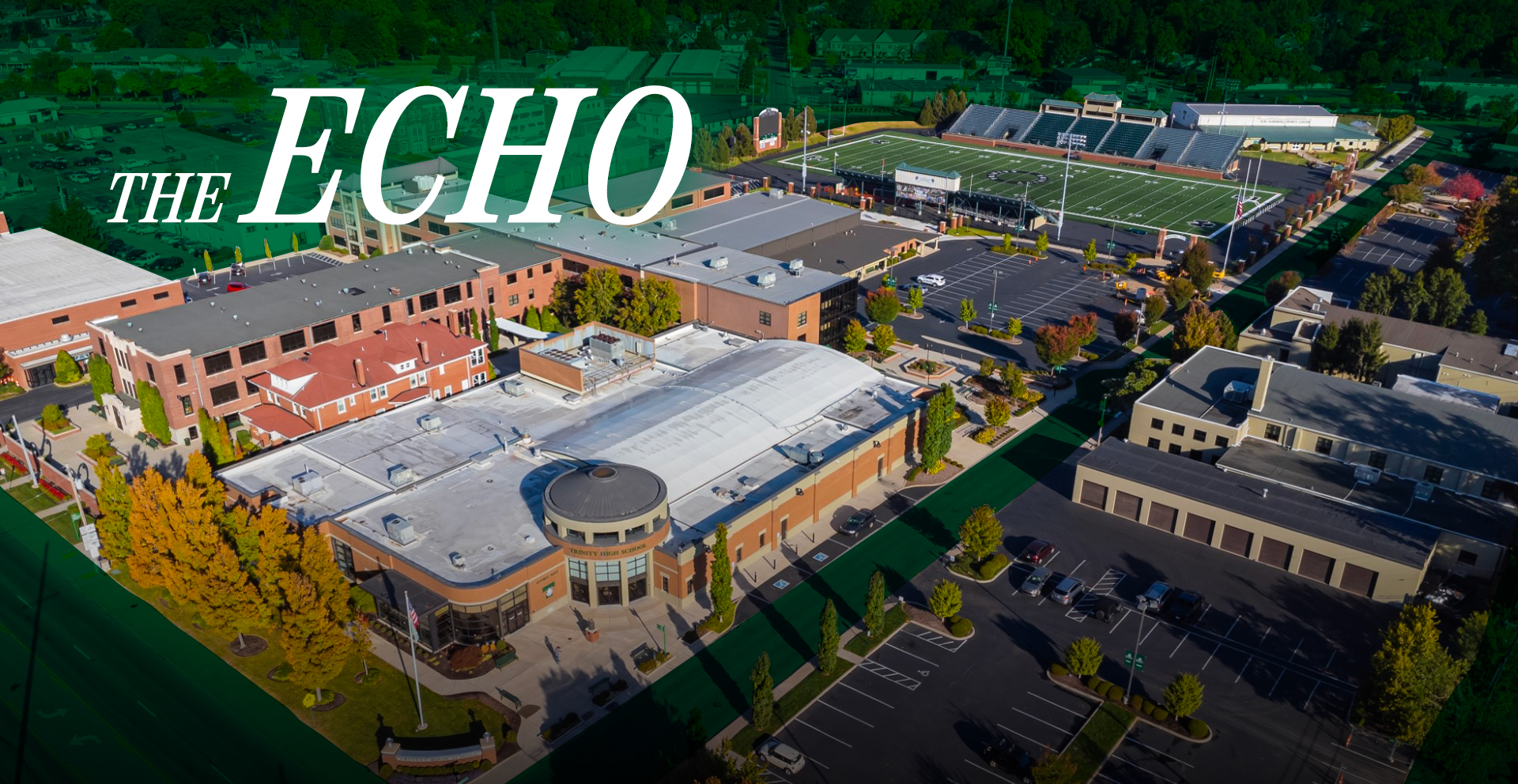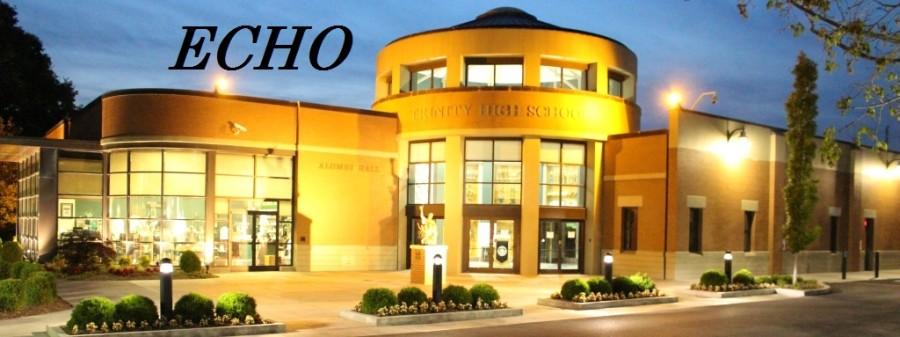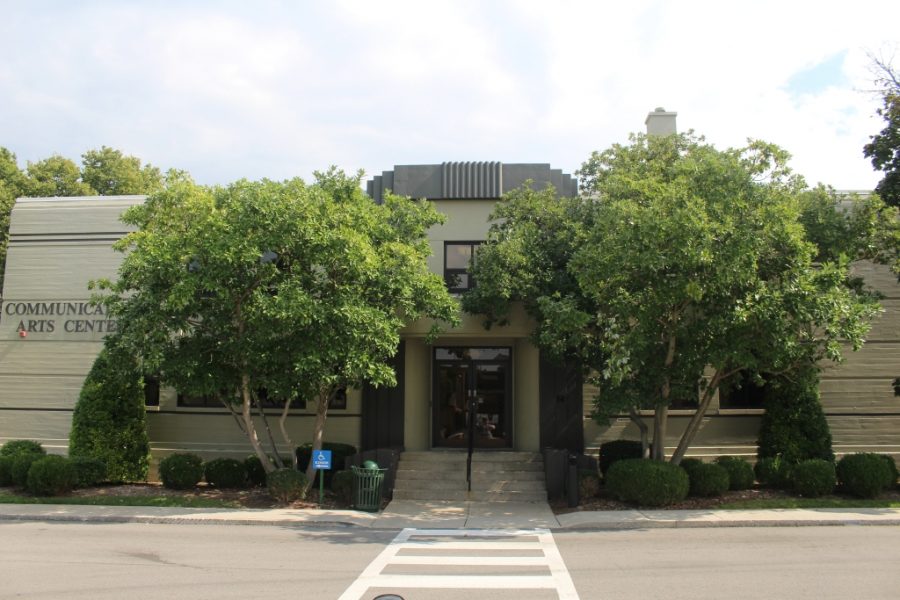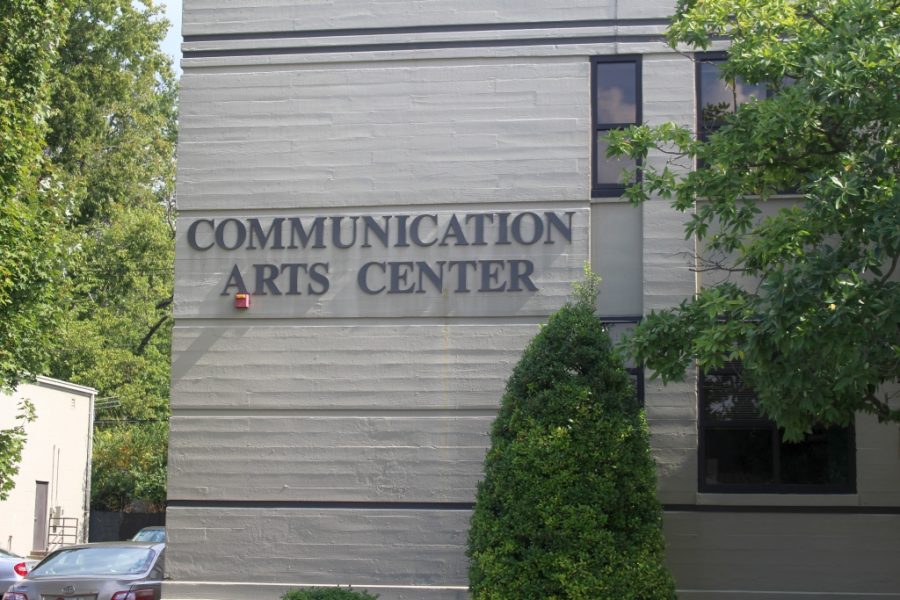Celebrating Three Decades in the Communication Arts Center
November 16, 2016
Imagine walking toward Sherrin Avenue. The day is warm, the sky is blue, and you’re heading to class. You quickly hop up the steps and glance at the massive building as the words Communication Arts Center come into view.
You walk in and enter your class — art with Mr. Shayne Hull or Mr. James Serochi, intro to art with Mr. Alan Wilson, music with Mr. Scott Ross, or journalism with Mr. Tony Lococo. The Communication Arts Center turns 30 this year, and it’s time to celebrate. Ross agrees and is excited to share his favorite memories of his time in the center.
Ross, who has been in the arts center for four years, teaches multiple subjects in music. He said, ”I started handbells (class) in the building, and to hear them go hand in hand was really nice. I think that what goes on in the building provides creative outlook. Everyone has an artistic talent, and this building gives everyone who goes to Trinity a way to explore it.”
Dating back to the fall of 1987, the Communication Arts Center’s convocation hall on the second floor has had an important role in students’ lives. It’s where dances were held and where senior retreats closed. It’s where students develop as men of faith and character during character talks. It’s where they bond as student-athletes in sports retreats. Future Trinity Rocks also are given the chance to see the building during open house, while their parents attend informational meetings.
After a massive renovation process during the summer of 1987, the building became classroom ready. The first teachers in the arts center were Fr. Al Moore and Mr. Jim Connell (art), Sr. Mary Agnes Mahoney (music) and Lococo (journalism). The arts center also houses the school’s archives.
Originally a National Guard armory, the 19,500-square-foot building has been around since the early 1940s and was acquired by Trinity in the mid-1980s.
Trinity’s archivist for the past 11 years, Ms. Barbara Mullen, provided more information about the building’s unusual history. Mullen, who credited Ms. Lynn Olympia with archiving much of the arts center material, said, “I enjoy the history of this building. The Department of Defense commissioned eight armories across the United States (before World War II), and this was one of them. It was mainly used to house the national guards stationed here. This was the home of the 149th Infantry of the National Guard. When not in (military) use, the community in St. Matthews would make use of the building.”
It’s amazing to think that the building has gone from housing weapons of destruction to developing young minds into the fields of art, music and journalism. A quote in an article by Paul Sommers, a former ECHO reporter, summed up the uniqueness of the building: “How many schools can claim an arts center that was formerly an armory?”
The building, which recently received the addition of an elevator, will forever be a part of Trinity’s rich history, paving the way for students to realize their artistic abilities.
According to various sources, as you walk up the steps toward the convocation hall — in the space where a painting of Jesus hangs — there once was a mural of a tank firing. That captures the essence of the transformation of the building: from war and death to peace and learning.



